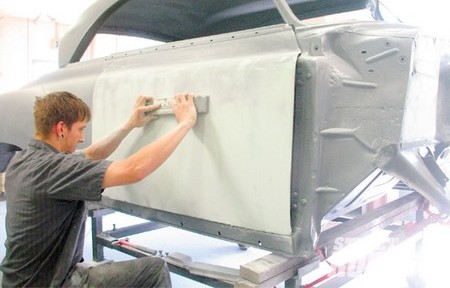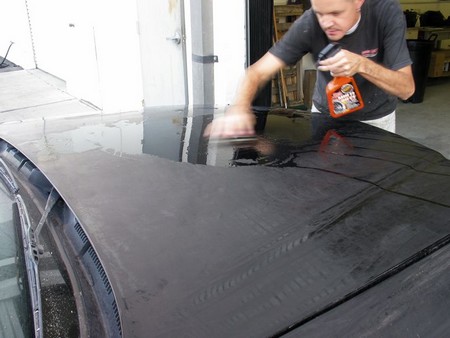If you plan on saving yourself some serious money by repainting your beloved car by yourself, then you should ensure a good foundation for the paint to adhere to by learning how to sand a car properly. Sanding a car in preparation for a new paint job is not something to be done halfheartedly as it is one of the most important steps towards a good paint job.

Virtually every inch of the car on which paint or primer is to be applied will have to be sanded in order to provide a smooth surface. Don’t sand down to bare metal if the car is in good condition. This is only advisable if there is rust to be removed.
For those who already know how to sand a car, they would expect to remove all external plastic and foam parts from the body. This makes sanding easier as well as prevents the parts from being damaged in the course of the sanding. Head, tail and running lights should also be removed, as should any trimming. If you’re jittery about detaching anything from the body of your car, or if there are items that can’t be removed, such as logos or other emblems, you can always tape over them over.
A power sander is used to remove any heavy scratches, other materials that mar your car’s surface as well as rust. Sanding should be carried out in a straight, not circular, line with a back-and-forth motion to prevent scratches. Also, circular sanding marks can show through the final finish, and you don’t want that. Sander pads might be needed if there’s a great amount of rust or surface damage. Always wear a dust mask and safety goggles when sanding to prevent respiratory distress or other injury, and work in a well-ventilated area.
The dust produced by the sanding is removed with an air compressor. Any dirt on the surface is also removed in this manner. An air compressor allows thorough cleaning because the air can reach deep into small spaces that could have trapped dust that may interfere with the final finish.
The final stretch of sanding a car can be the most labor-intensive. You will need to wrap 120-grit sandpaper around a wooden block and go over any areas the power sander may have missed and other less accessible areas. Make sure to sand in a straight line. Fine scratches can be removed with 200-grit sandpaper before using 320-grit and lastly 600-grit sandpaper for a really smooth finish, using the air compressor to remove any dust produced. Wipe the surface with a dry cloth before examining the body closely. Sand and remove dust with the air compressor until you’re completely satisfied with the job done.









